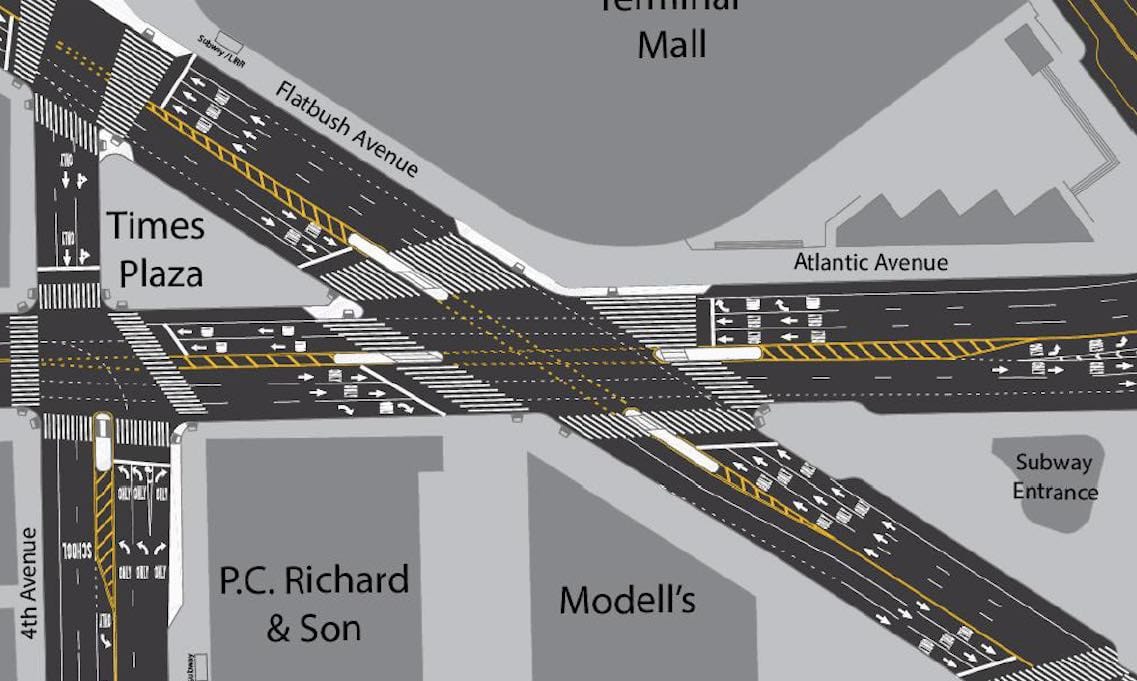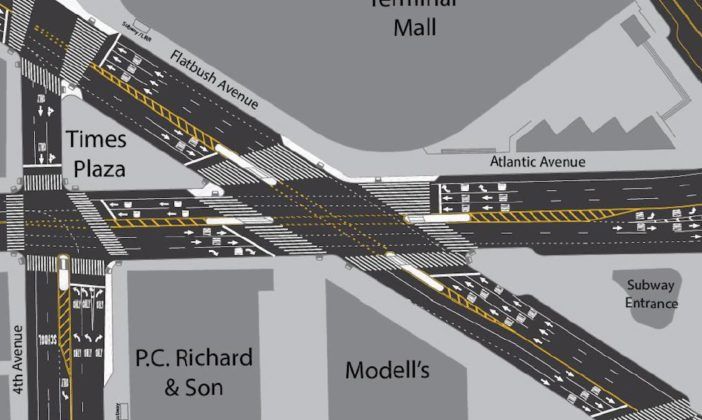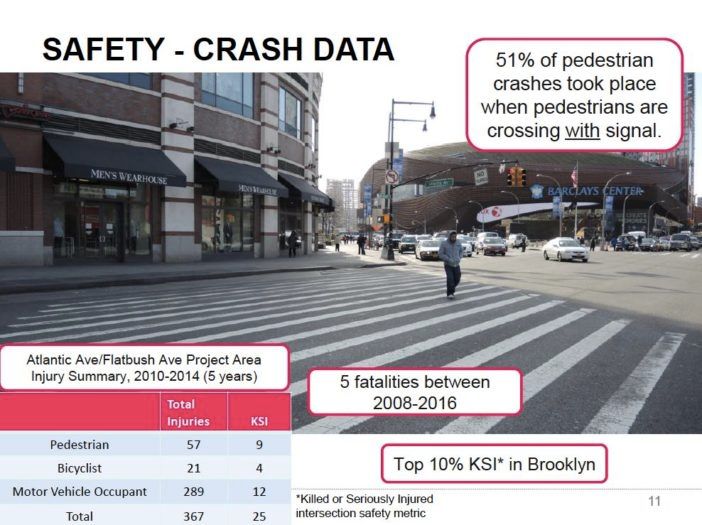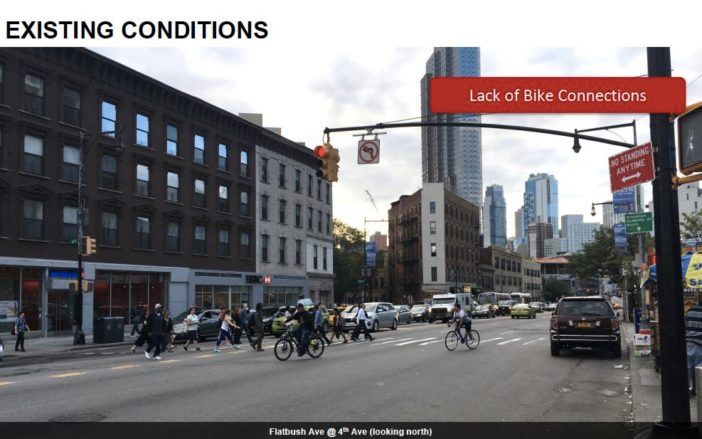Traffic Calming At Times Plaza Is Key To Flatbush-Atlantic Safety Plan


A New York City Department of Transportation comprehensive plan for the Flatbush Avenue/Atlantic Avenue area, presented at a public meeting Wednesday, included several proposals for changes around Times Plaza, the triangle created by the intersections of Flatbush, Atlantic and Fourth Avenue.
Noting that there have been five fatalities and hundreds of serious injuries in the last eight years, DOT spokesperson Rich Carmona told a public meeting at Third Avenue YWCA that the changes focused on traffic calming and pedestrian safety.
After presenting an overview of the plan, Carmona invited the audience to break up into groups of five or six to study large maps of the area along with DOT representatives. The breakout sessions allowed people to ask more detailed questions about the proposals as well as provide feedback.

The comprehensive plan recommends changes for three areas along Flatbush Avenue; near Schermerhorn and Lafayette, at Hanson Place, and at Times Plaza. Carmona detailed five specific proposals for the streets that form Times Plaza.
- Build pedestrian safety islands on each leg of the Flatbush and Atlantic Avenue crossings.
- Extend the sidewalk on Fourth Avenue at PC Richard to shorten the length of the pedestrian crossing.
- Build “neckdowns,” or curb extensions at the intersection of Flatbush and Atlantic to reduce the double lanes for right-hand turns in both directions to a single turning lane each way.
- Widen the road on the west side of Fourth Avenue between Flatbush and Atlantic to preserve space for a potential bike connection (although no bike lane is currently planned for that block).
- Add a new pedestrian crossing to the Barclays Center at the northwest corner of Pacific and Flatbush.
Carmona explained some of the traffic calming measures will have unexpected effects. There is heavy traffic in the area, and “limiting traffic on Atlantic will drive it to surrounding streets,” he said. However, eliminating one of the turning lanes in each direction could “reduce Atlantic from four lanes to three without slowing traffic.”
That’s possible, Carmona explained, because the street already narrows further along its route, and congestion is increased by the merging traffic that is created. Without the merging, traffic flow would be improved.

In addition to structural changes, Carmona said, the DOT recommends establishing “leading pedestrian intervals,” which allow people to begin walking across the street for several seconds before the lights change for vehicular traffic. The DOT’s study of traffic accidents in recent years showed that more than half the pedestrians crashes took place “while they were crossing with the signal,” Carmona said.
According to the DOT, a comprehensive safety plan for the area is important for several reasons. It is already a major intersection of three two-way streets, each of which is a truck route to the bridge out of the borough, and new residential and commercial development means there will be increased activity in the neighborhood. The area is also a transit hub serving the subway, the LIRR and multiple bus lines, as well as a major entertainment and shopping area.
This creates exceptional curbside demand from taxis, dollar vans and black cars, plus delivery vehicles loading, unloading and double parking. “There is also substantial bike traffic,” Carmona said.
Many of the same elements that prompted the DOT to develop the plan make executing it more complicated. “It’s complicated by underground infrastructure, which means a capital project is needed” to complete many of the proposals. Because the department does not have the capital budget for that, even if the plan is approved by residents and the community board, the DOT will have to rely on other government entities and private developers to fund the work.

Carmona said that development of the plan had begun in 2015, with DOT employees canvassing the neighborhood to survey residents. He noted that there had been two prior meetings in 2016 to solicit feedback, and promised that the DOT would make revisions to the proposal based on the response to the current presentation.
After forty-five minutes of breakout sessions, Carmona asked for questions and comments. Several speakers reiterated the same points.
There was widespread support for including a bike path in the plan, specifically one from Hanson Place along 4th Avenue to the other side of Atlantic. Also, “crosswalks should follow where people actually cross,” one commenter suggested, drawing approval from the audience.
Residents also complained that the DOT’s plan was based on the current design of streets in the area, while existing and planned development often results in traffic lanes being closed for months at a time to accommodate construction. That made existing maps of the area unreliable for demonstrating actually existing conditions.
The Department of Transportation has posted the Atlantic Avenue/Flatbush Avenue Comprehensive Safety Plan online. Anyone with comments or questions can contact the department’s Abigail Ikner at aikner@dot.nyc.gov.




